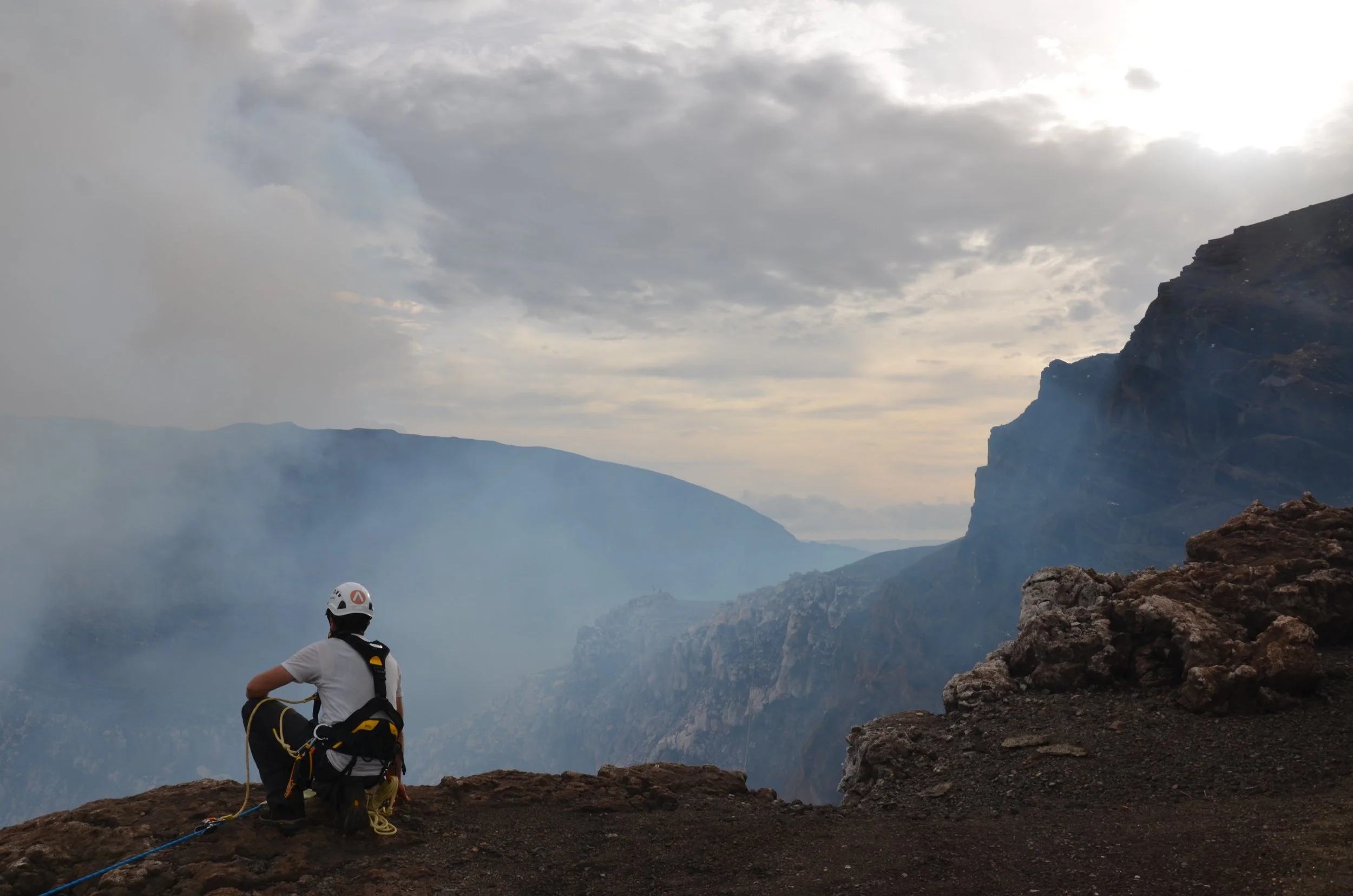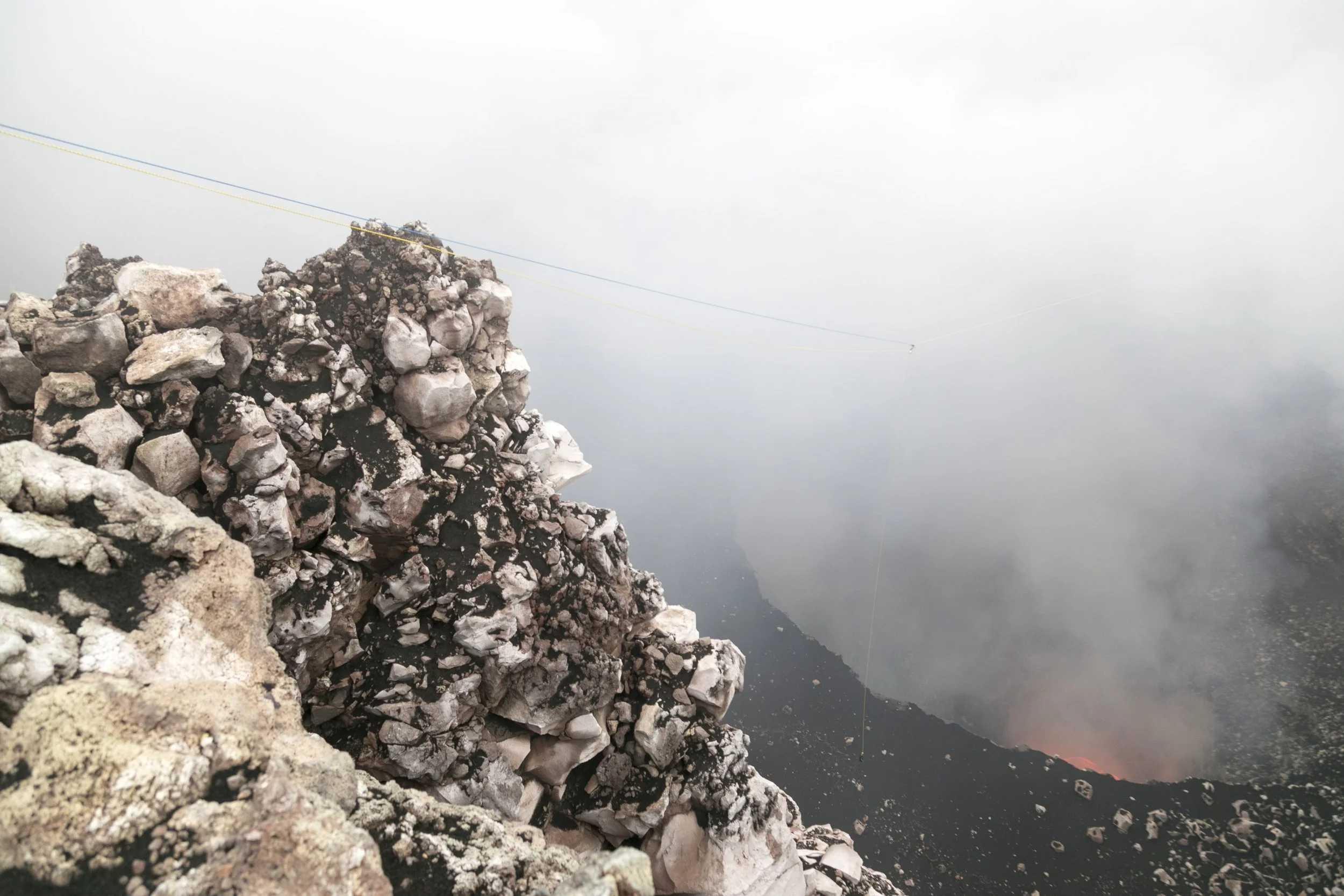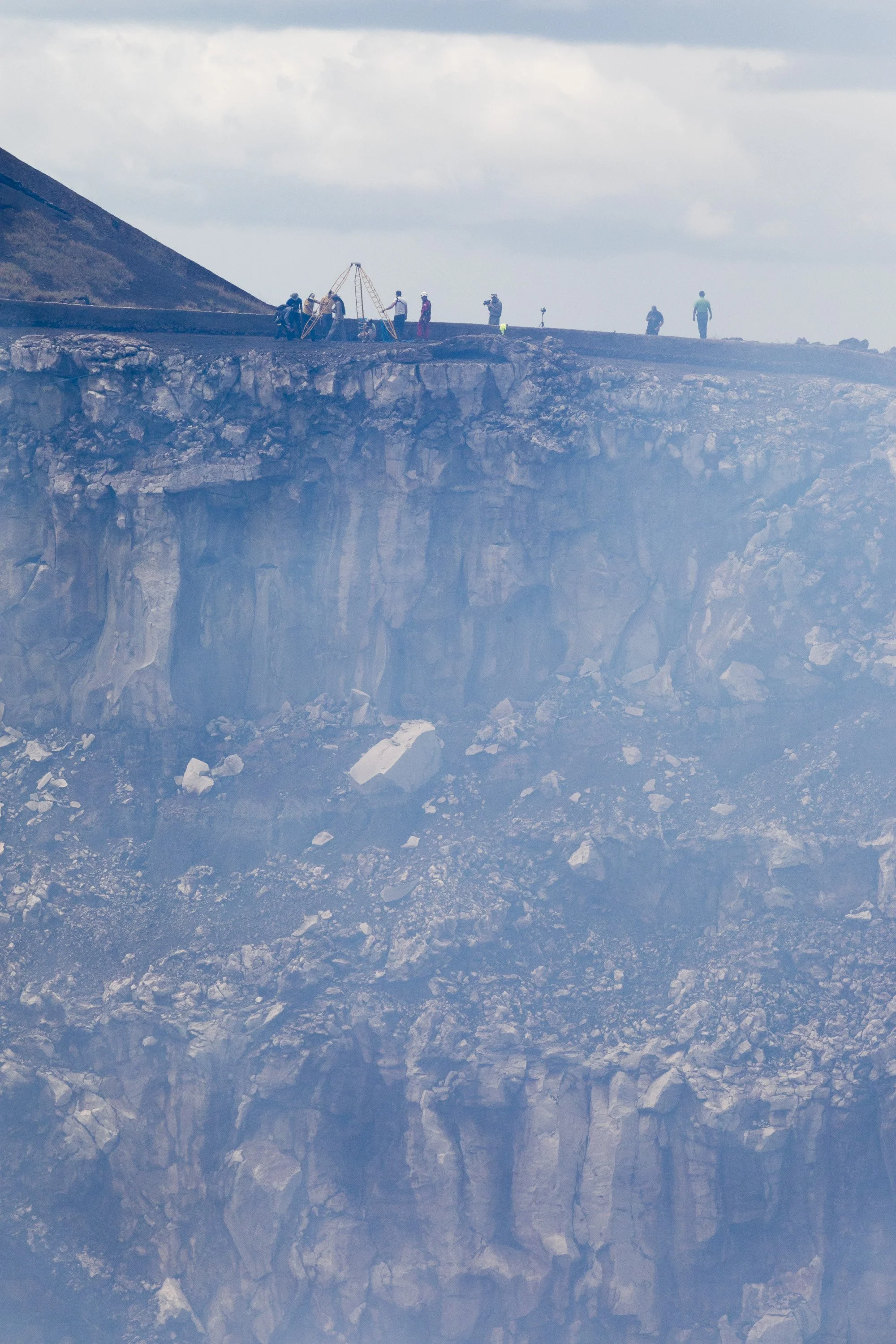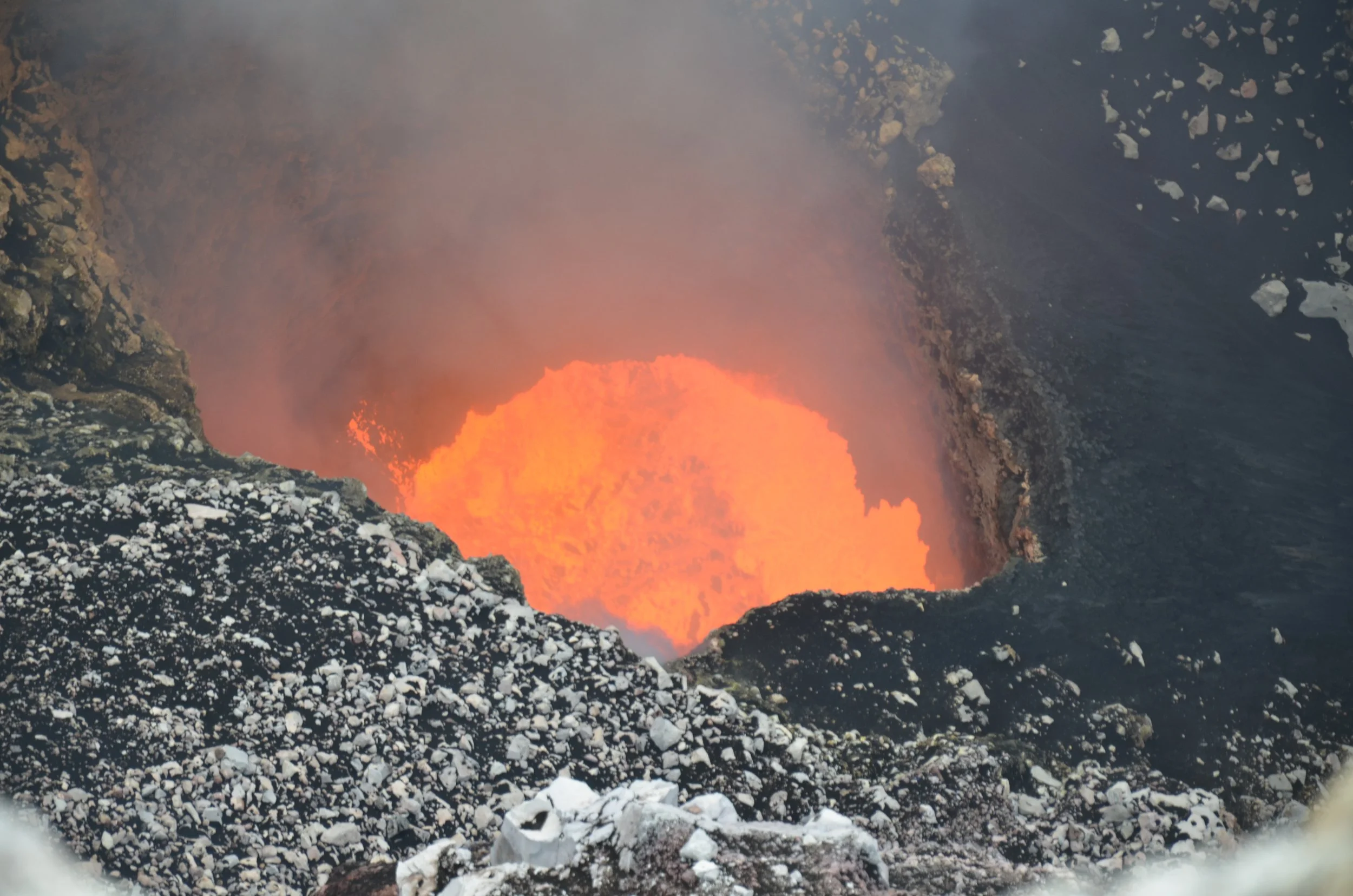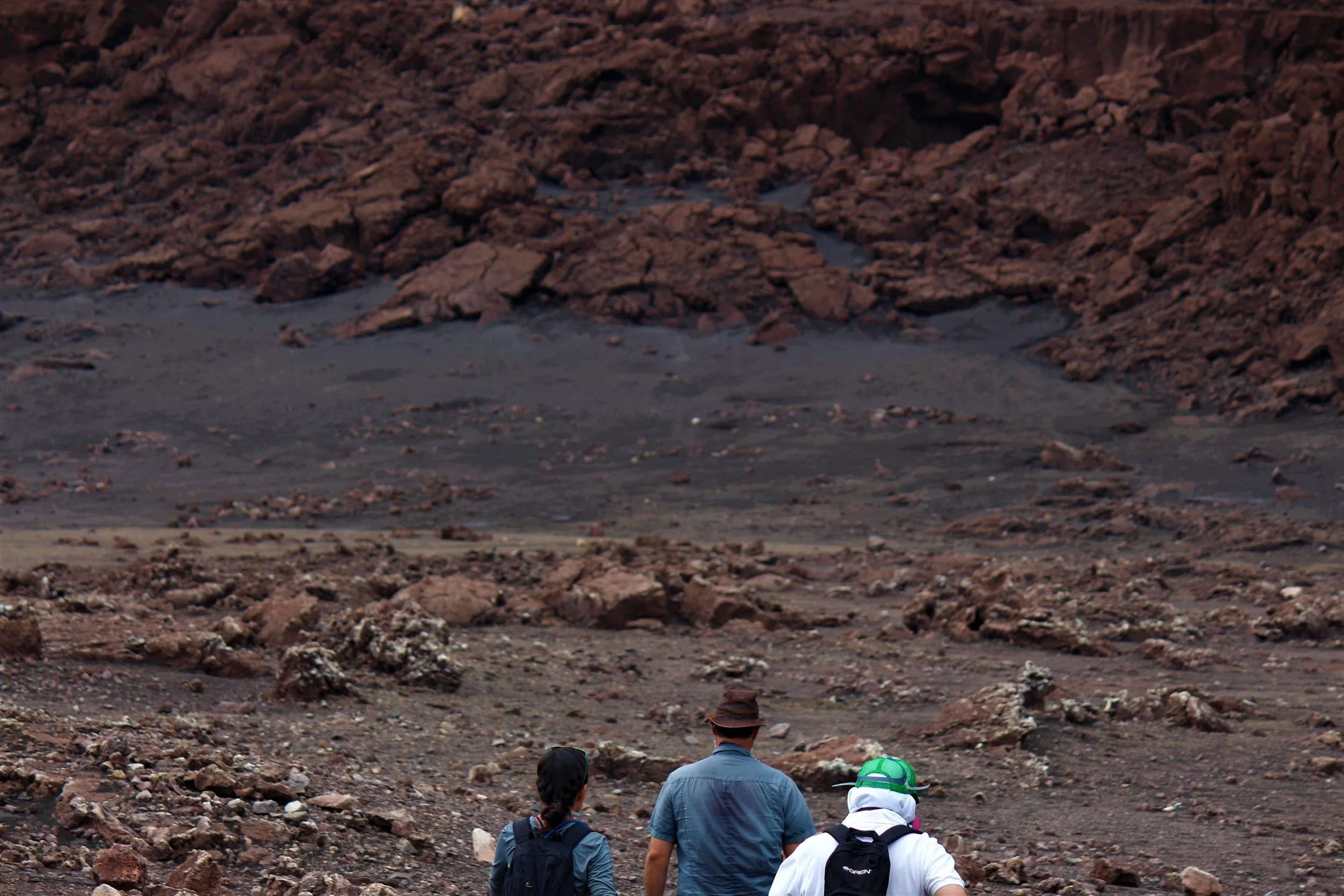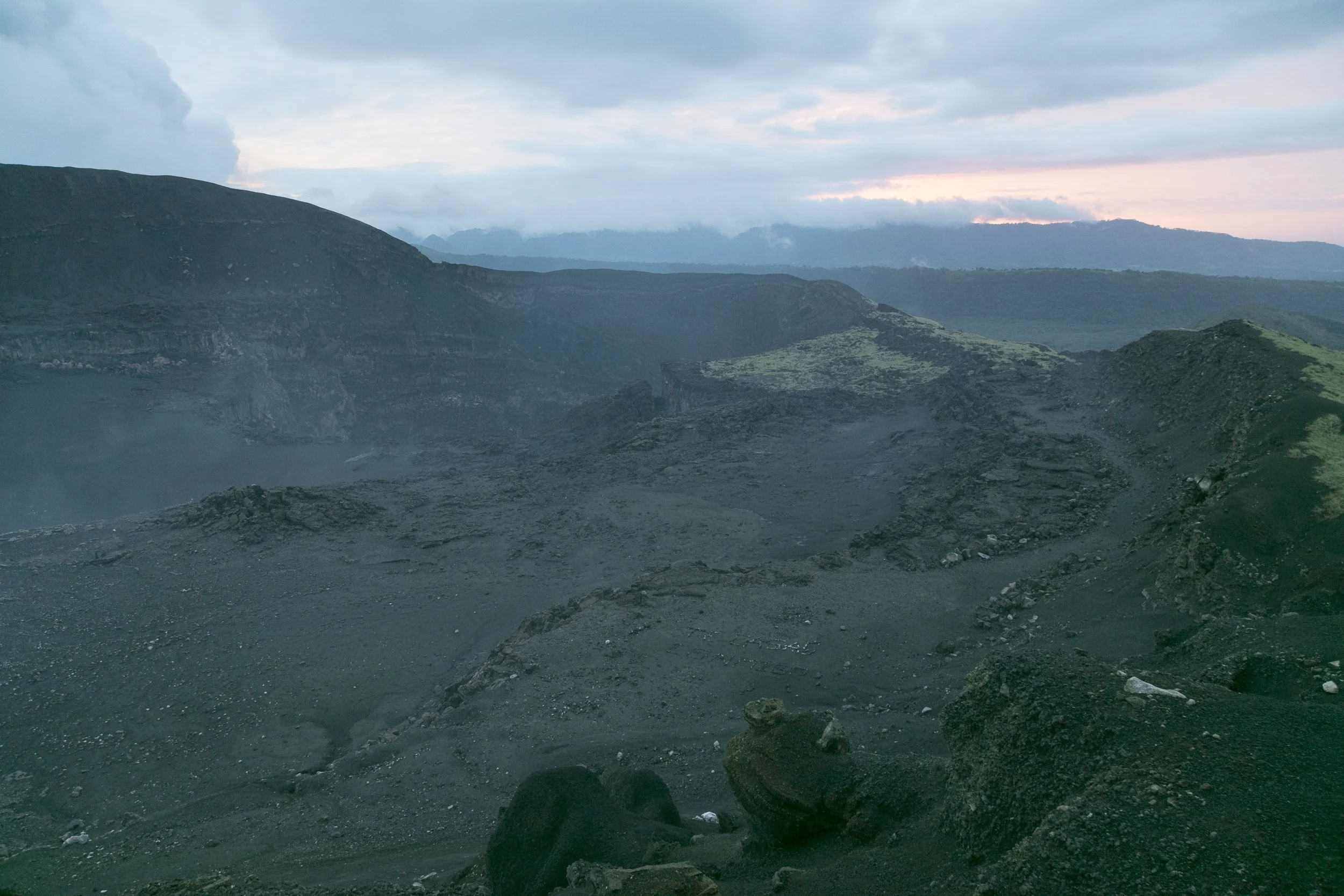Case Study: The Lava Lake Laboratory
The Challenge: Unraveling the Mysteries of Masaya’s Lava Lake
Masaya Volcano in Nicaragua is one of the few places on Earth where a persistent lava lake provides scientists with a rare opportunity to study volcanic activity in real-time. Understanding the behavior of the lava lake, the composition of emitted gases, and the impact of volcanic activity on surrounding communities is critical for advancing global volcanic research and improving safety measures.
GeoArc, a team with experience in conducting scientific research in extreme environments, saw this unique opportunity. In collaboration with esteemed partners, including the Petzl Foundation, the International Volcano Monitoring Fund, Simon Fraser University, and the Government of Nicaragua, GeoArc set out to conduct five groundbreaking experiments over a 15-day expedition.
The Approach: A Science-Driven Adventure in Extreme Conditions
Bringing together an international team of 11 experts and 11 local collaborators, GeoArc designed and implemented specialized rigging systems to access and monitor Masaya’s convecting lava lake safely. This ambitious expedition, conducted from July 1-16, 2017, focused on the following five key scientific experiments:
Crater Gas Sampling – Measuring gas emissions directly from the crater to assess the composition and impact of volcanic gases.
Downwind Gas Sampling – Tracking how volcanic gases travel and disperse in the surrounding environment.
Lava Sampling – Collecting lava specimens to analyze mineral compositions and temperature variations.
Camera Splashdown Experiments – Lowered the camera/temperature system into lava lake. Camera/temp probe connected by ~5 m HDMI cable to loggers in insulated housings
Lava Viscosity Measurements – Determining the fluid dynamics of the lava lake to predict changes in volcanic behavior.
While we successfully conducted several experiments, not all went exactly as planned. In the case of lava sampling, we managed to lower the collection device directly into the lava lake—a significant achievement in itself. However, due to the extreme temperatures and the constantly shifting surface of the lava, we were unable to fully recover the sample. Despite this challenge, the rest of our experiments and sample collection efforts were carried out successfully, yielding valuable data for our research.
The Rigging: Taking on the Challenge with Our Experience and Knowledge
Accessing the lava lake at Masaya Volcano required an innovative and highly technical rope access rigging system. With safety as a top priority, the GeoArc team, in collaboration with the Petzl Foundation, designed custom rigging setups to safely lower personnel and equipment into the crater’s lower levels. These systems allowed the team to conduct close-proximity sampling without direct exposure to the intense heat and fumes of the lava lake.
We deployed approximately 1800 metres of kernmantle rope across the opening of the lava lake, creating a robust access system. Three tripods, strategically positioned around the crater’s rim, worked in unison to stabilize a central masterpoint. From this masterpoint, a controlled rope system safely lowered sensors and other scientific equipment 400 meters into the crater, ensuring precise placement for data collection. Our system also enabled personnel to descend to the lower level with safely and with control.
An extensive rescue plan was meticulously designed, rigged, and kept on standby to ensure that any team member could be extracted from the lower level immediately if needed. We are proud to report that every planned operation was executed flawlessly, and the rescue system remained unused—a testament to the careful preparation, and expertise of the whole team.
Utilizing high-quality ropes, anchors, and harnesses from Petzl, the team employed advanced industrial rope access and work-at-height techniques to navigate the challenging and unpredictable terrain. The precision and expertise involved in setting up these systems ensured that critical scientific experiments—such as gas and lava sampling—could be carried out with minimal risk. This aspect of the expedition not only pushed the limits of volcanic research but also highlighted the critical role of advanced rigging techniques in extreme scientific exploration.
The expedition was an overwhelming success, yielding invaluable data that deepens scientific understanding of Masaya’s volcanic activity. The team’s ability to conduct precise sampling and measurements in such an extreme and unpredictable environment was a testament to their expertise and the power of international collaboration.
Additionally, the expedition captivated a global audience, inspiring the next generation of explorers and scientists. Through social media and outreach efforts, including engagement on Instagram, Twitter, and Facebook, GeoArc shared the excitement and importance of this mission with the world. GeoArc’s Instagram feed still has all the posts from the Masaya expedition. We encourage anyone who is interested to revisit those posts and experience the journey firsthand.
The Legacy: A Model for Future Volcanic Research
GeoArc’s expedition to Masaya set a new standard for scientific exploration in extreme locations. The techniques and findings from this mission will serve as a foundation for future volcanic research, not just at Masaya but at other active volcanoes worldwide.
Through this mission, GeoArc aided in conducting a meaningful, scientifically rigorous expedition that contributed to global knowledge while inspiring adventurers and scientists alike.
Disclaimer:
The information presented in this case study is for informational and storytelling purposes only. It is not intended to serve as instructional material or a guide for performing rope access, scientific fieldwork, or any related activities. The techniques, equipment, and methods described were carried out by trained professionals with extensive experience in industrial rope access and hazardous environments.
Attempting to replicate any aspect of this project without proper training, certification, and safety measures can result in serious injury or death. Additionally, all written content and images contained in this case study are the property of their respective creators and may not be used for instructional purposes in any form.

